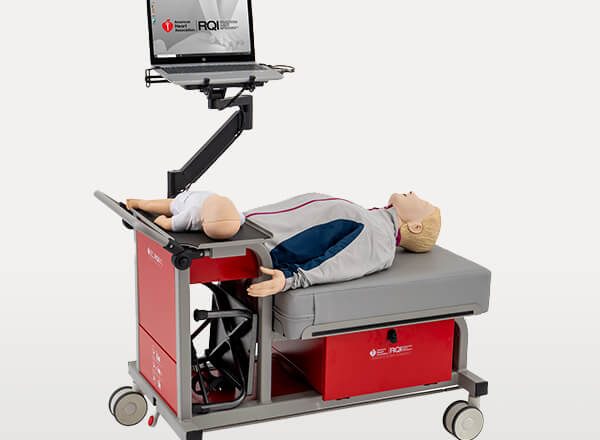In the fast-paced realm of healthcare, simulation stations are vital hubs for comprehensive in-hospital CPR training. They deliver frequent and robust education, provide standardized protocols, offer real-time feedback, and foster competency and confidence across critical care scenarios.
Here's how simulation stations prepare individuals for real-life sudden cardiac arrest situations, with insight from hospital experts overseeing their implementation.
What Is a Simulation Station?
Simulation stations can empower healthcare professionals by providing on-site CPR training using portable, adaptable simulation systems. For example, Resuscitation Quality Improvement (RQI) Simulation Stations are strategically placed within healthcare facilities and accessible 24/7, ensuring healthcare providers have continuous access to training resources. Each simulation station conducts cognitive and psychomotor skill assessments while minimizing disruptions to patient care and workflows.
RQI Simulation Stations are mounted on carts with wheels and push handles for easy mobility between departments. They come fully assembled and preconfigured, featuring user-friendly login procedures and Wi-Fi connectivity for seamless use.
Key components of the RQI Simulation Station cart include:
- Adult and pediatric manikins for compression and ventilation practice
- Bag valve masks for both age groups
- A tablet PC for integrated training sessions
- An adjustable tablet arm for flexibility
- A step stool for proper compression depth
- A wheel lock mechanism for stability during training
- A push handle for mobility
- Storage compartments for training materials
Simulation Stations vs. Simulation Labs
Some facilities have strategically distributed simulation stations, while others have dedicated simulation labs. Michelle Wright, an advanced professional development practitioner at BayCare Health System's Sally L. Bailey Education Center in Florida, leads a simulation lab. She said it's her "pride and joy," as there's nothing like it.
BayCare Health System's cutting-edge simulation lab equips healthcare providers with the confidence and skills needed to navigate high-stakes cardiac emergencies. The simulation lab incorporates:
- One large room with four patient beds
- Two life-size patient rooms
- A control room with a two-way mirror
- Equipment including a workstation on wheels cart with a computer, a crash cart, two vital sign machines and audiovisual equipment
- Six manikins
Of the six manikins, two are high fidelity (adult and pediatric), three are medium fidelity and one is low fidelity. High-fidelity manikins offer more advanced features like blinking, palpable pulse and realistic physiological responses, while medium-fidelity ones may include prerecorded speech and anatomical accuracy. These manikins are used for training procedures such as taking blood pressure, starting IVs and responding realistically to trainee actions.
The BayCare simulation lab's goal is to replicate real-life scenarios as authentically as possible, using identical rooms, equipment and teams alongside manikins that provide a realistic and frequent training experience.
Simulation Stations Enhance Confidence, Improve Critical Thinking
Dani Feraro, an advanced professional development practitioner of clinical education at St. Joseph's Hospital North, highlighted several benefits of using simulation stations for frequent high-quality in-hospital CPR training.
"Having the psychomotor skills to perform chest compressions quarterly has improved our team members' confidence and skills at performing high-quality CPR," she explained. "This allows our team members to stay up to date with current data and content, along with increasing their critical thinking skills on a regular basis and testing those skills."
Preparation for Real-Life Situations
Cherish Frank, an American Heart Association training center coordinator and manager of nursing development and clinical professional practice for BayCare Health System, said staff members feel more confident and willing to perform CPR during real-life emergencies after simulation station training. "In years past, they might stand around waiting for someone else to show up and do compressions (code team, etc.). Now, they are willing to jump in," she noted. "I see the impact being quicker response times and early recognition leading to improvements."
Frank also said RQI training's low-dose, high-frequency format is vital to maintaining competency. "By not allowing subjective feedback from an instructor every two years, the staff maintain their skills and improve," she said. "The objective feedback from the RQI stations has proven to be exactly what our staff needed."
Skills Practice and Performance Standardization
Feraro explained that RQI's standardized CPR training leaves no doubt that all information is presented in the same manner, held to the same standard and tested fairly. "The manikin provides more accurate measurement because the computer can detect accuracy better than a human can," she said. "The fact that all the RQI stations are the same device and equipment holds us all to the same standard."
Frequent access to a simulation station maintains readiness and confidence among healthcare professionals when responding to cardiac emergencies. "RQI offers the ability to bridge the gap of knowledge that may fall off from the two-year gap from the conventional class," Feraro stated, adding that it increases the "readiness and confidence of our team members when responding to emergencies."
Strengthening Staff Education and High-Quality Care
When asked how standardized simulation station training and education impacts the overall quality of patient care within healthcare facilities, Feraro replied, "More confidence, faster response time, higher staff satisfaction and better outcomes."
For more information about simulation stations and CPR training technology, explore RQI's options.








